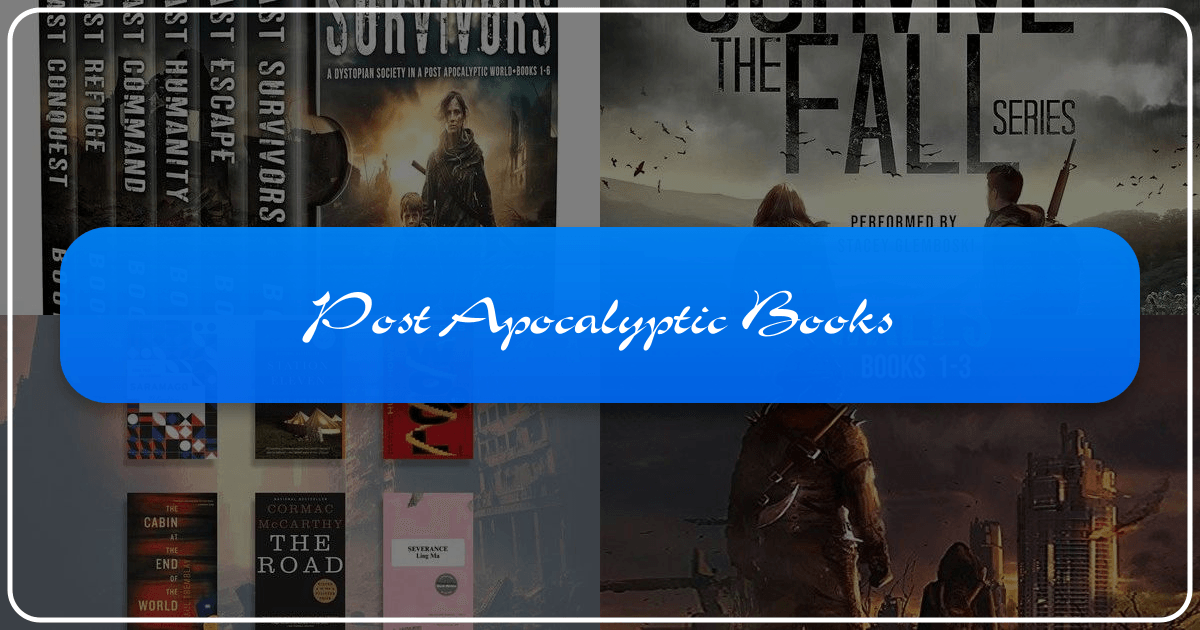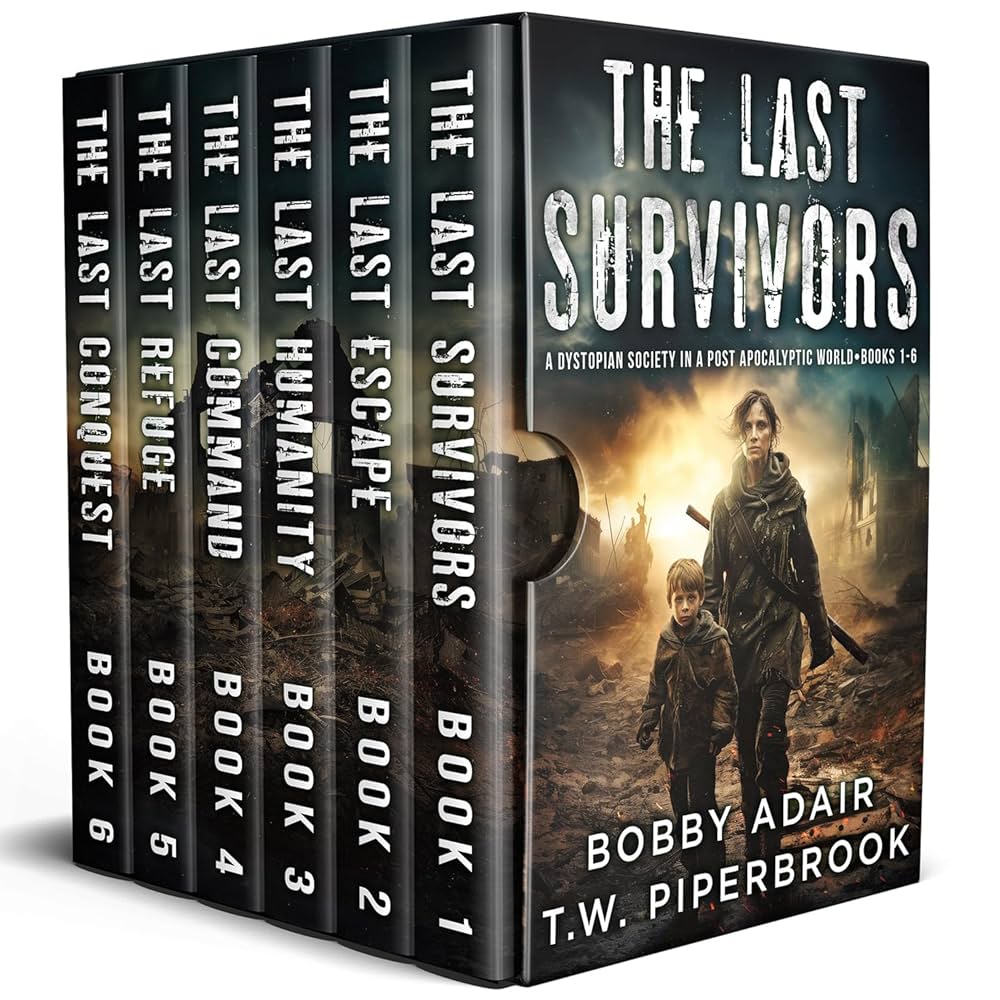Post-Apocalyptic Books: A Journey Through Ruined Worlds

The post-apocalyptic genre, a landscape of shattered civilizations and desperate survival, has captivated readers for decades. From the chilling realities of a world ravaged by disaster to the profound exploration of humanity’s resilience, these stories offer a compelling blend of action, suspense, and philosophical reflection. Inspired by the immense popularity of HBO’s “The Last of Us,” this article delves into the diverse world of post-apocalyptic literature, exploring its themes, classic titles, and the enduring cultural impact it holds. We will also examine the various ways readers engage with this genre, the resources available for finding and understanding these books, and the communities that have formed around them.

Exploring the Genres and Subgenres of Post-Apocalyptic Fiction
Post-apocalyptic literature isn’t a monolithic entity; it encompasses a wide spectrum of subgenres, each offering unique perspectives on the aftermath of societal collapse. Some common threads that weave through these narratives include:
-
Zombie Apocalypses: This hugely popular subgenre, exemplified by “The Last of Us,” explores the survival challenges posed by hordes of undead. Stories often focus on the struggle for survival, the breakdown of social order, and the moral compromises individuals make to endure.
-
Dystopian Societies: These narratives often portray a future where society, while still functioning, is oppressive and controlling. They explore themes of social control, individual freedom, and rebellion against authority, offering commentary on contemporary societal issues.
-
Environmental Collapse: Also known as cli-fi, this subgenre focuses on the consequences of environmental disasters, like climate change or catastrophic natural events. The focus shifts to adapting to a drastically altered natural world, exploring humanity’s relationship with its environment.
-
Technological Collapse: These stories depict a world where technological advancements have backfired or simply ceased to function, leading to a return to more primitive living conditions. They explore the loss of technology’s benefits and the challenges of reconstructing society.
-
Pandemic Fiction: Similar to zombie apocalypses, pandemic narratives explore the impact of widespread disease on society. They often delve into the psychological consequences of isolation, the spread of misinformation, and the choices people make when faced with death.
-
Nuclear Winter: This classic post-apocalyptic setting often depicts a world ravaged by nuclear war, struggling to rebuild amid radiation, societal collapse, and scarce resources. The stories frequently focus on the survivors’ attempts to create new societies and grapple with the horrors of the past.
This diversity allows for exploration of numerous themes beyond mere survival. Post-apocalyptic fiction serves as a powerful tool for social commentary, examining issues like:
-
Human Nature: In the face of extreme adversity, how do people behave? Are they altruistic or selfish? Do they cooperate or compete? These questions are central to many post-apocalyptic narratives.
-
Social Structures: How do societies form and evolve after collapse? What systems of governance and social order emerge? These questions explore the very foundations of community and human interaction.
-
Moral Dilemmas: The desperate circumstances often force characters to make difficult moral choices, raising complex questions about ethics, justice, and survival’s true cost.
-
Hope and Resilience: Despite the bleak settings, many post-apocalyptic stories portray hope and resilience, highlighting the human spirit’s strength in enduring even the worst adversity. These narratives often celebrate acts of courage, compassion, and the determination to rebuild.
Post-Apocalyptic Classics and Bestsellers: Shaping the Genre
The post-apocalyptic genre has produced a rich array of classic novels and contemporary bestsellers that have profoundly shaped the genre’s trajectory:
Classics:
-
The Last Man by Mary Shelley (1826): Often considered the genre’s foundational text, Shelley’s novel depicts a world decimated by a plague, exploring themes of isolation, loss, and societal collapse.
-
Alas, Babylon by Pat Frank (1959): This Cold War-era novel examines the aftermath of a nuclear attack on the United States, focusing on the struggles of a small Florida community attempting to rebuild.
-
A Canticle for Leibowitz by Walter M. Miller Jr. (1959): A complex and deeply philosophical novel set centuries after a nuclear apocalypse, exploring themes of faith, technology, and the preservation of knowledge.
-
Earth Abides by George R. Stewart (1949): This novel details the long, slow decline of civilization after a mysterious plague wipes out most of humanity, offering a quiet, introspective look at a world returning to nature.
Bestsellers and Contemporary Favorites:
-
The Road by Cormac McCarthy (2006): A stark and emotionally powerful novel about a father and son’s journey across a post-apocalyptic America, exploring themes of survival, love, and the loss of hope.
-
The Stand by Stephen King (1978): An epic tale of a pandemic that wipes out most of humanity, with survivors choosing sides between good and evil, exploring the complex interplay of faith, morality, and human nature.
-
Station Eleven by Emily St. John Mandel (2014): A critically acclaimed novel set in a world ravaged by a flu pandemic, emphasizing hope and resilience amidst chaos, exploring the power of art and human connection.
-
The Children of Men by P.D. James (1992): A thought-provoking novel where humanity loses its ability to reproduce, examining the societal collapse and the desperate search for a way to avert extinction.
These works showcase the genre’s breadth and depth. They’re not just thrilling adventure stories; they’re profound explorations of human nature, societal structures, and the challenges of surviving the unimaginable.
New Releases and Recent Trends in Post-Apocalyptic Fiction
The post-apocalyptic genre continues to evolve, with new releases consistently pushing creative boundaries and exploring fresh perspectives. Recent trends include:
-
More diverse characters and perspectives: Contemporary post-apocalyptic novels increasingly feature characters from diverse backgrounds, challenging traditional tropes and offering richer, more nuanced narratives.
-
Exploration of climate change’s impact: Climate fiction (cli-fi) has become a prominent subgenre, examining the effects of environmental disasters on society and raising awareness about environmental issues.
-
Increased focus on psychological trauma: Modern works often explore the psychological effects of surviving catastrophic events, exploring themes of PTSD, grief, and the lasting impact of trauma.
-
Blending of genres: Post-apocalyptic novels frequently blend with other genres, like horror, romance, mystery, or science fiction, creating complex and engaging narratives.
The constantly evolving landscape of post-apocalyptic fiction ensures a vibrant and engaging reading experience. Authors continue to find creative ways to explore the themes that resonate with readers.
Authors: The Minds Behind the Ruined Worlds
Many talented authors have contributed to the post-apocalyptic landscape. Their unique writing styles, inspirations, and thematic concerns have shaped the genre’s identity:
-
Cormac McCarthy: Known for his bleak and poetic prose, McCarthy paints vivid pictures of devastation and human desperation, delving into the darkest aspects of human nature.
-
Stephen King: King’s epic scope and ability to blend genres seamlessly have led to many works focusing on social dynamics, moral dilemmas, and the fight between good and evil during apocalyptic scenarios.
-
Emily St. John Mandel: Mandel’s work offers a more hopeful perspective, exploring the resilience of the human spirit and the enduring power of art and human connection.
-
Margaret Atwood: Atwood often uses post-apocalyptic settings to explore current sociopolitical issues and criticisms of contemporary society’s trajectory.
-
Octavia Butler: Butler seamlessly weaves social commentary, Afrofuturism, and feminist themes into her post-apocalyptic narratives, offering unique perspectives on survival and societal collapse.
Each author brings their unique style and perspective, enriching the genre and pushing its creative boundaries.
Reading and Learning: Engaging with Post-Apocalyptic Literature
Engaging with post-apocalyptic literature offers more than just entertainment. It provides opportunities for:
-
Critical thinking: Post-apocalyptic novels often raise complex moral and philosophical questions, prompting readers to engage in critical thinking about human nature, society, and the environment.
-
Emotional exploration: The intense emotional landscape of these stories allows readers to confront and explore their own feelings about loss, fear, hope, and resilience.
-
Expanding perspectives: The diversity of characters and scenarios found in post-apocalyptic fiction helps readers broaden their perspectives and empathize with those different from themselves.
-
Improved literacy: Reading these books strengthens critical reading skills, enhancing vocabulary and comprehension abilities.
-
Learning about history and science: Many post-apocalyptic novels draw upon historical events and scientific concepts, providing readers with opportunities to learn about the past and explore possibilities for the future.
Libraries: Accessing Post-Apocalyptic Worlds
Libraries remain indispensable resources for accessing post-apocalyptic literature:
-
Public libraries: These institutions provide free access to a wide range of books, making post-apocalyptic novels accessible to a broad audience.
-
Digital libraries: Online libraries like Project Gutenberg and OverDrive offer digital access to many post-apocalyptic titles, broadening access and convenience.
-
University libraries and archives: These specialized collections often hold rare and out-of-print post-apocalyptic works, providing valuable resources for researchers and scholars.
-
Specialized collections: Some libraries maintain collections focused specifically on science fiction or dystopian literature, offering a curated selection of post-apocalyptic novels.
These libraries offer essential resources for readers seeking to explore the rich and ever-evolving world of post-apocalyptic literature.
The Cultural Impact of Post-Apocalyptic Fiction: A Lasting Legacy
Post-apocalyptic literature’s cultural influence extends far beyond the printed page:
-
Film and television adaptations: Numerous post-apocalyptic novels have been adapted into successful films and television series, bringing these stories to wider audiences. Examples include “The Road,” “The Stand,” and “Station Eleven.”
-
Video games: The post-apocalyptic genre has also significantly impacted video games, with many successful titles drawing upon this setting and its thematic concerns. “The Last of Us” stands as a prime example of this influence.
-
Art and music: Post-apocalyptic themes have also inspired visual artists and musicians, creating works reflecting the genre’s atmosphere and philosophical concerns.
-
Social commentary: Post-apocalyptic literature serves as a powerful medium for expressing anxieties about present-day societal issues. By depicting catastrophic scenarios, these stories offer critical commentary on themes of environmental destruction, political extremism, societal inequalities, and the dangers of unchecked technological advancement. They act as cautionary tales, prompting reflection on the paths society is currently taking.
-
Community Building: Online forums, book clubs, and social media groups dedicated to post-apocalyptic literature provide opportunities for readers to connect with one another, discuss their favorite works, and share their insights and perspectives. These communities foster a sense of connection and shared intellectual engagement, extending the post-apocalyptic narrative beyond individual reading experiences.
The post-apocalyptic genre’s enduring legacy reflects its ability to tap into fundamental human anxieties, explore the deepest aspects of human nature, and offer both cautionary tales and sources of hope and resilience. Its versatility and adaptability have ensured its continued relevance and ensured its place within the literary and broader cultural landscape.